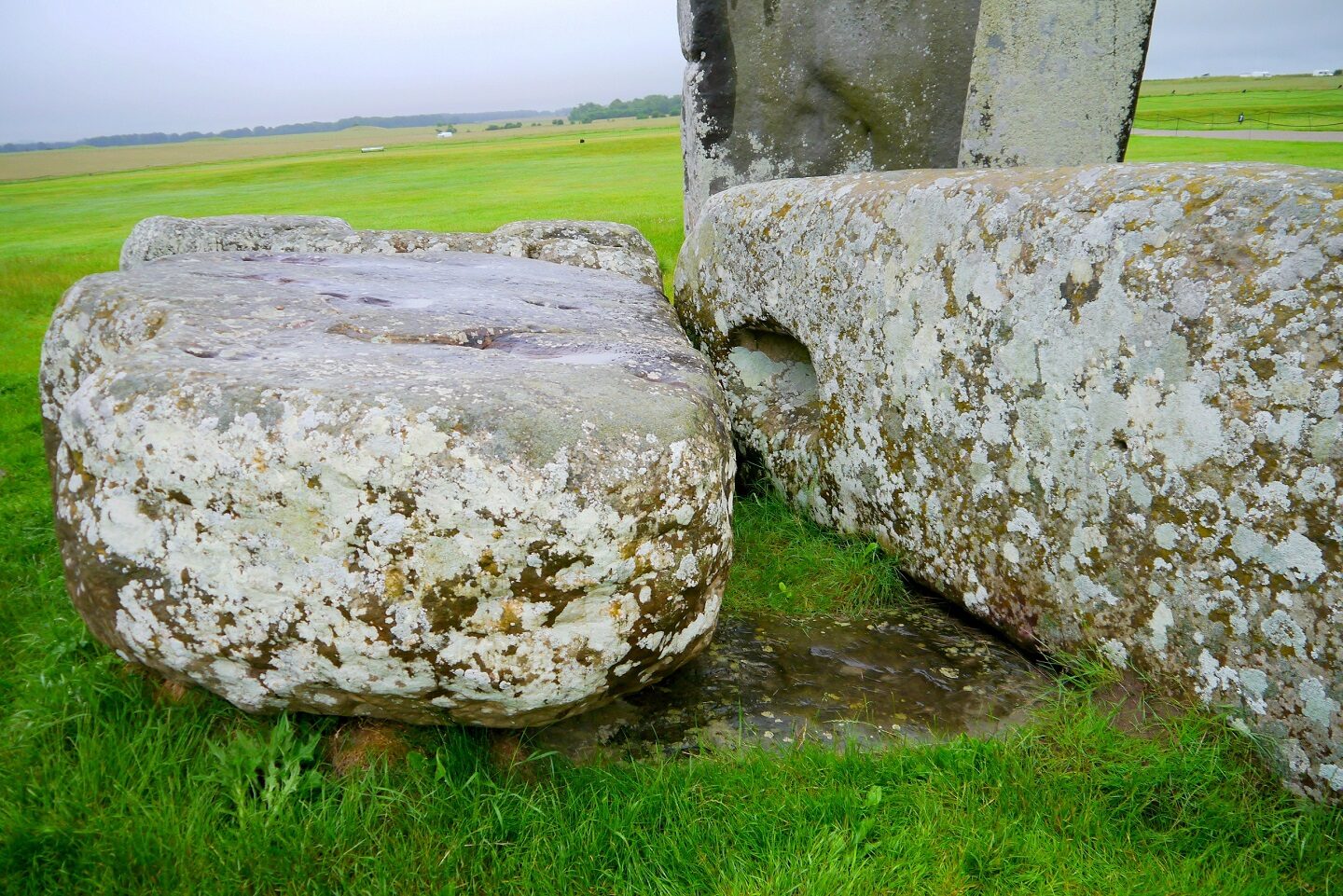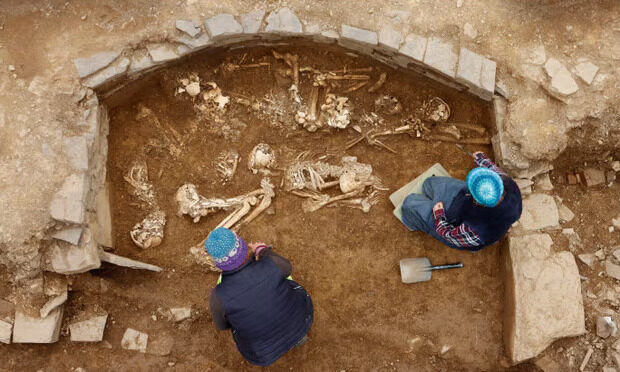
© Professor Nick Pearce, Aberystwyth UniversityThe Altar Stone, seen here underneath two bigger Sarsen stones.
For the past 100 years, the 6-tonne Altar Stone was believed to have come from Old Red Sandstone in south Wales.
This was assumed to be close to the Preseli hills in west Wales where the majority of Stonehenge's world-renowned 'bluestones' came from.
Formed when molten rock crystallised, the Pembrokeshire bluestones are believed to have been among the first erected at the Wiltshire site around 5000 years ago.
The Altar Stone, a sandstone, has traditionally been grouped with the other, smaller, igneous bluestones, although when it arrived at Stonehenge is unclear.
Now, in an attempt to locate its source, scientists at Aberystwyth have compared analyses of the Altar Stone with 58 samples taken from the Old Red Sandstone across Wales and the Welsh borders.
The composition of the Altar Stone cannot be matched with any of these locations. The Altar Stone has a high barium content, which is unusual and may help in identifying its source.




Comment: It's notable that these students would probably have also been considered to be members of the upper class: